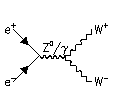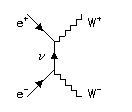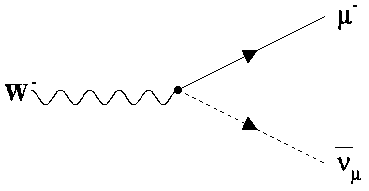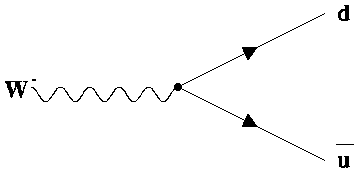
 .
.The production of a W+W- pair of particles can be represented by the following diagrams:

 .
.
After about 10-25 seconds a W decays, so we don't see it directly in our detector. A W can decay in two different ways. The first type of decay produces a lepton and an antineutrino. For example, the following picture shows the W decaying to a muon and a muon antineutrino.

In a similar way a W can to decay to produce an electron or a tau lepton.
The second type of W decay produces a quark and an antiquark:

Because both the W+ and the W- decay to produce particles we see in the detector, the resulting events are slightly more complicated than the particle-antiparticle pair events we looked at in the previous section. We get different types of W+W- event depending on whether both W+ and W- decay to produce quarks, both decay to produce leptons, or one W decays to produce quarks and one W decays to produce leptons.
Here are some examples of the different types of W+W- events:
Once you've understood the way we identify the different
types of W+W- events, then please:
 click here to proceed to the next part
of the programme, which is
"Part 3".
click here to proceed to the next part
of the programme, which is
"Part 3".